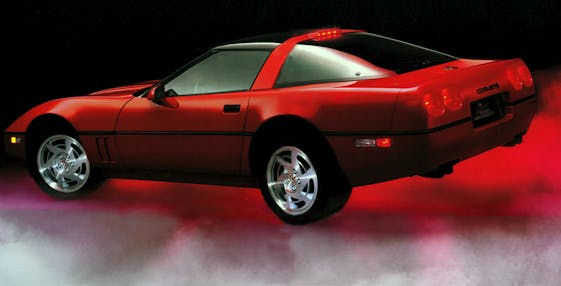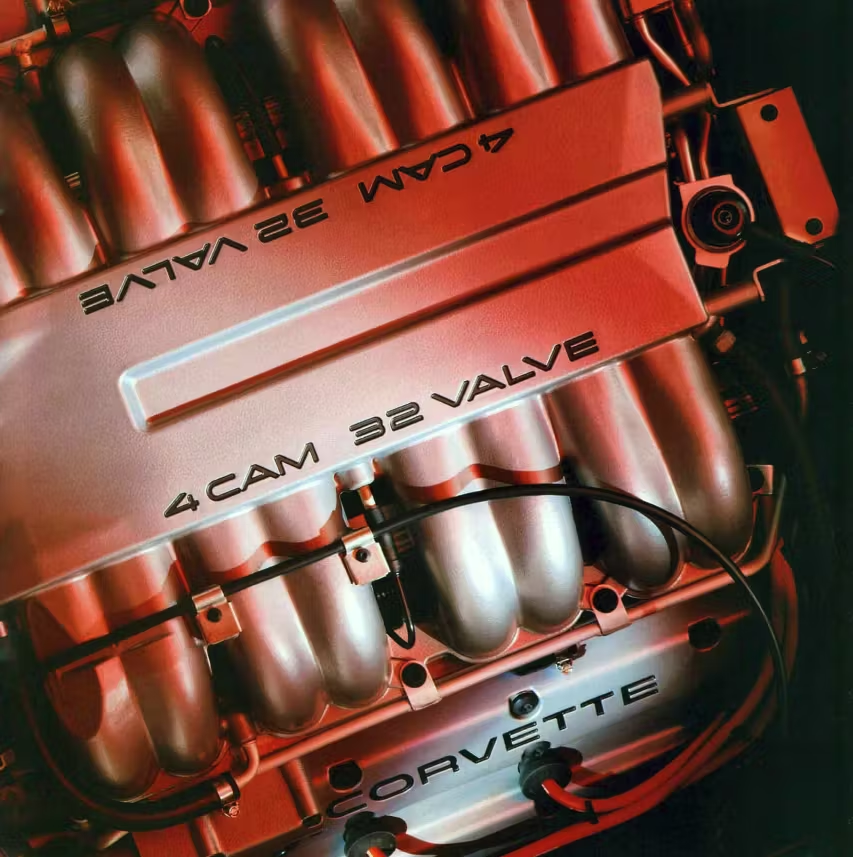Media | Articles
What is the best engine you’ve ever experienced?
This question might sound a little familiar, as we discussed your worst engines in our last installment of According to You. And that’s where Hagerty Community member Bob Keith’scomment comes into play:
“Hey one more thing – excellent piece on the Worst Engines – NOW how about an article on the BEST Engines? I would love to read the final survey results for that!”
Me too, Bob! So let’s do it. Your answers should not be regurgitated opinions from others, nor should they be from content consumed online or in a magazine. Only your experience with an engine can help forge such an enviable accolade.
To kick things off, I’ll share my candidate and give you all a sense of what we’re hoping to see in your answers.
Lotus/Mercury MarineChevrolet LT5 V-8

My experience driving a 1990 Corvette ZR-1 ensured that its 5.7-liter LT5 V-8 motor would become my runaway favorite engine. I got to enjoy it for just a few days as a college student, but that was all I needed. The C5 generation (1997–2004), LS1-equipped Corvette was already a couple of years old by the time I met the C4 generation (1984–96) ZR-1, but I couldn’t care less after tasting the sweet, sweet powerband of that LT5 motor. Between the 370 lb-ft of torque and 375 hp on tap and the wide powerband, the experience absolutely blew me away. (That little key on the dash that turns off half of the sixteen fuel injectors when someone else needs to drive it is worth a chuckle or two, as well.)
Then I drove a Lingenfelter stroker version of the LT5 that was bored out to 6.8 liters and made 668 horsepower—the brain-melting commenced for a second time. The big boy Lingenfelter has all the torque of a big block muscle car with the powerband of a VTEC Honda. You simply cannot understate the magnificence, especially when you open the hood and see Lingenfelter’s signature siamesed intake resting atop those massive double-overhead camshaft heads.
Marketplace
Buy and sell classics with confidence

The ZR-1 was a tour de force when new, but it’s just as impressive nowadays and still shockingly underappreciated in today’s red-hot collector car market. While it’s a bit complex on the induction side of things, the motors are shockingly reliable and quite trustworthy. Why people don’t lust after this vehicle is beyond me, but the LT5 is clearly the best engine I’ve ever experienced.
And with that, I leave it to you, Hagerty Community:
What is the best engine you’ve ever experienced?
Jump in with your experiences in the comments below.
Check out the Hagerty Media homepage so you don’t miss a single story, or better yet, bookmark it.














many years ago I installed a 426 Dodge wedge into street rod, a Bullitt proof engine along with the 727 torque flight, drove to all the street rod nationals from 1974 to 1982,never a problem, street raced it, lost very few races, it pissed off a lot of Chevrolet guys because my 426 was in a 1935 Chevrolet master two door sedan, another great engine was the Chevrolet 327, I put one in my 1950 Chevrolet half ton pickup and drove it year round,it never missed a beat, I live in Wisconsin and worked at O’Hare,my car of choice for the trip was a Buick grand national, the little turbo V6 didn’t burn a drop of oil even after two hundred thousand miles, I used to get into races driving to and from O’Hare on route 12, that car never let me down.
As mentioned by Mr Road Test the Jaguar E type 6 cyl double overhead cam family of engines beginning with XK120 and running thru XJ6 series 3. The smooth power, the wonderful sounds and the beauty early on of polished cam covers and porcelain coated exhaust manifolds still uplift me after more than 45 years of working with them.
1995 Mazda 626 DOHC 2.5 liter V6 with 5-speed. Aluminum block and heads, 4 hydraulically-adjusted valves per cylinder, this jewel of an engine had a dual powerband, only fairly strong at the bottom, but came on the cams at 4000 RPM and screamed to a 7000 RPM redline. Incredibly smooth, sounded great, totally reliable (and, in the 626, a sleeper that didn’t attract police attention). Not suited to the automatic transmission as low-end wasn’t strong enough, but with the excellent-shifting 5-speed it came alive. The car cruised at 100 MPH effortlessly but served just as well as a grocery-getter.
327 chevy in a 1964 corvette, 365hp with a close ratio transmission and 3.70 gears. Redline was 6500 rpm and it would do 65 mph in 1st, 85 in 2nd, 105 in 3rd, and top out at 125-130. Strong engine and very quick!
Toss up between the highly tuned 3.3 ltr inline six in my restored 73 BMW CSL and my current tuned 2016 Mustang GT with the Coyote motor
Various versions of the Nissan VQ (3.0, 3.5, 3.7) in the U.S. I even enjoyed the 3.7L in the last gen NISMO Z even though it lacked high-revving smoothness. Also, the “modern” Boss 302 Mustang: smooth revving to 7,500 RPM, great airflow since it hits it’s HP peak there, forged internals, sodium-filled exhaust valves, ported/polished heads, oil cooler, and terrific sounding side exhaust, all from the factory. It’s so full of character!
More with less:
250 HP @ 6000RPM
258 lb-ft@ 4000RPM
0-60MPH – 5.7sec.
Top Speed – 162MPH
All from a turbocharged inline 4!
I sure miss my ’89 Porsche 944 Turbo
1972 Slant Six in a Dodge Demon. Indestructible several times went way past the 120 mph mark and still wish I had the little car.
The best engine experience for me has been the 5.9L Cummins 24VHO turbodiesel in my 2001 Dodge 2500. Day after day of efficient operation; pulling trailers as needed in the summer and pushing snow through Upper Peninsula winters. After 21 years it still has the original pump and injectors at 230k miles, still runs like new and will probably go to 500k as long as the rest of the truck doesn’t rust away.
Volvo red block. My ’91 240 was hauled off to the boneyard today (still running but with a smushed-in rear) due to a crash last week, but after a quarter-million miles that engine (and everything else containing oils) never leaked a drop, ran strong (as much as it could anyway), no smoke, fired within one crank of the starter, and will hopefully live on under another Volvo hood.
I’ve had a variety of different engines over the years. 1) 302 Windsor 2) 351 Windsor 3 ) 305 2 and 4 barrel well over 436000 km 4) Gm 3.8 V6 Excellent fuel economy and over 466000 KM 5) 307 Oldsmobile excellent fuel economy on the highway and over 300000 km and a Chevy 350 4 barrel ORANGE BLOCK ( 1972) what a powerhouse.
VW VR6 is an amazing engine. It’s a narrow angle V6 that uses only one head. Naturally aspirated. Very strong motor using timing chains, that depending on vintage produced 200-250 hp. With proper maintenance, will last for several hundred thousand miles. The motor can be built up internally and with supercharger or turbo added can withstand 1,000 hp!!! Mine is right at 600hp. The exhaust note is unique and throaty. Some have compared the sound to the growl of an angry Wookiee.
no votes for the S2000 VTEC, the Saab 4 in the 900 turbo clearly superior to any Porsche short of the 917?
I own a 1993 ZR-1 40th Anniversary. The power this LT5 engine comes in where most engines fall off. 5000rpm to 7200rpm is astounding. After I owned it for 3 years I turned the traction control off and found another 50hp hiding out under the hood, WOW!
The F136 in my 2004 Maserati Spyder.
7600 rpm dry sump 4.2L DOHC V8 made of silicon alloy (lighter than most alloy 6 cylinder engines).
Mine has a throttle chip, custom short tube headers and a high flow tubi exhaust good for about 425 HP. It’s a cross plane crank so basically sounds like an Italian muscle car with hair trigger throttle response
Love it!!